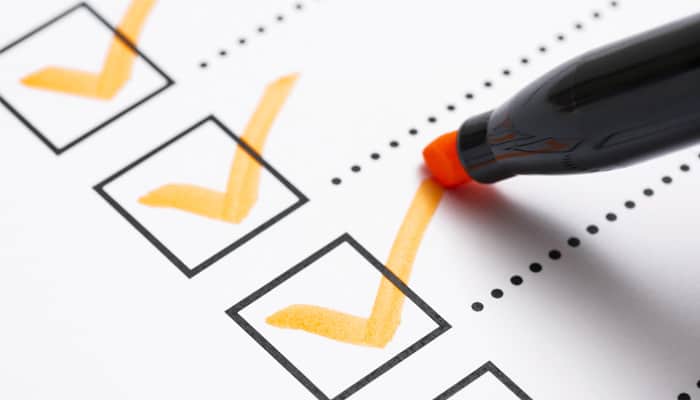Planning a meeting: The ultimate checklist
Every meeting organiser knows meticulous planning is the key to hosting a successful event.
Any planner worth their salt understands how having a checklist to prepare for the meeting is essential to ensure nothing is overlooked.
The question is, what should be included in the ultimate checklist for a meeting? The answer, of course, is anything that could affect the success or failure of the event, from the early planning stages onwards.

Why are you meeting?
Identify the purpose of the meeting and determine whether a get together is really necessary. Is it to make a decision, boost your team’s morale, solve a challenge, or inform attendees about a new initiative?
Once you’ve established the need for the meeting, develop a preliminary agenda. Drawing up an agenda is paramount to a productive gathering. It seldom works if you try winging it!
Plan the topics for debate and work out how much time you’ll need for the introduction, to discuss the various steps and the conclusion to the event. The longer a meeting, the tougher it is for attendees to remain focused, so don’t try to squeeze too much into the allocated time.
Who’s coming?
Time to select the relevant participants – those employees who can assist in accomplishing the goal and who will be impacted by the outcome. Invite the key decision-makers and people who have a stake in the topic in hand, or who are particularly knowledgeable about it.
Also invite those who need to be kept informed in order to do their day-to-day duties and anyone who will be implementing the decisions you make. Invite more delegates for brainstorming, if this is the purpose of the meeting.
Always remember time is money, so be aware of the impact your meeting will have on employee time across the organisation. Invite only those who absolutely must be there. According to research carried out in the UK before the Covid-19 pandemic, the average employee spends 187 hours a year in meetings. Unfortunately, 56% of respondents felt the meetings were unproductive and 66% admitted to having made up excuses to avoid them altogether.
In order to make people feel the meeting is useful, assign them an appropriate role, to increase engagement and focus.
Choosing a venue
Set the date, time and venue for the meeting and book the event space in advance, after confirming availability, so there are no eleventh hour hitches.
Selecting a relevant meeting space can help set the tone. For example, if you want the meeting to be intimate and informal, choose a smaller room and arrange the chairs in a circle. If you’re aiming for a formal and rigorous ambience, choose a conference room.
When you’re hosting a hybrid meeting, with a mix of actual and virtual delegates, ensure your equipment is organised to enable everyone to hear, speak and participate. Make sure the virtual delegates can see the people in the room.
Fine-tuning your event
Circulate the invitation and agenda to the delegates and make sure they understand the meeting’s purpose. In addition, send any other material that needs to be read prior to the event, so participants know exactly what’s happening.
Choose the decision making method in advance and make sure everyone’s aware of it. For example, a majority vote is generally fair, but some less outgoing people may find it difficult to reveal their opinion publicly. Leader’s choice is a fast approach, but it can mean some ideas go unheard.
Before the meeting, test any equipment in your meeting room. This may seem like a no-brainer, but make sure you actually know how to use the technology! If you’re not confident, ask for help from a more knowledgeable colleague.
Pre-meeting checks
As the meeting approaches, check on people who haven’t replied to the invitation. If you have assigned roles to delegates, make sure they understand what’s required of them.
There are physical preparations, as well as mental. Check practical things, such as whether you have enough seats and whether there’s fast internet access at the venue. Make sure the water bottles are well-stocked and visible. Organise pens for delegates if required.
Decide whether you need a break mid-meeting to stop people from flagging and determine whether mobile phones should be turned off to avoid interruptions. If you need a minute-taker, ensure you book their services in advance.
Covid-19 safety
Book a venue through &Meetings – we provide an automatic room upgrade to facilitate social distancing.
Finally, practice your presentation to boost your confidence. By preparing and adhering to the ultimate checklist, you will be set up for a safer and more successful meeting.
Share this post
Tags
- Career Development
- Celebrity Meetings
- Conferences
- Confidence
- Exhibitions
- Historic Meetings
- How to Interview Effectively
- Human Resources
- In The Press
- Meetings and Conferences
- Monarchy
- News
- Our Team
- Personal Development
- Personnel
- Presentation Techniques
- Teamwork
- Top Tips for Meetings
- Training & Workshops
- Video Conferences



